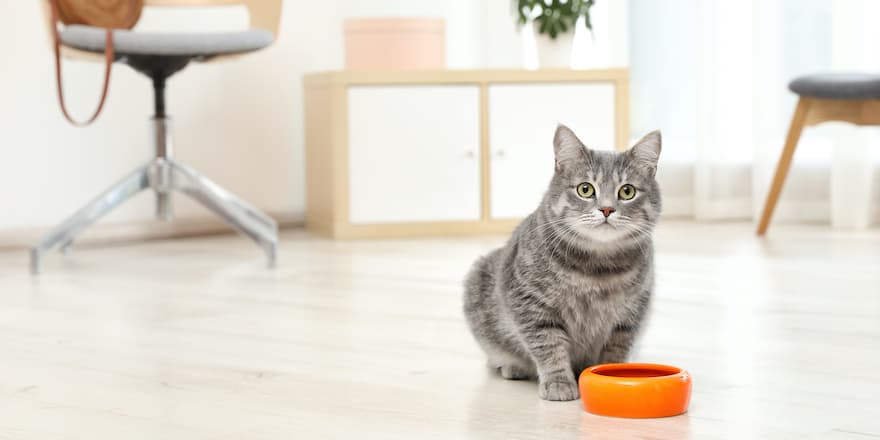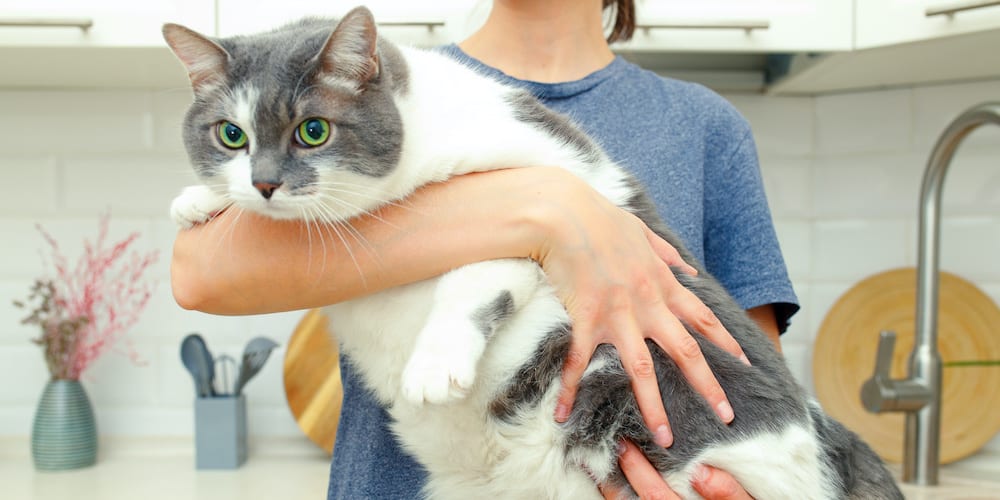Do you think your little feline is overweight? This is quite possible (and common!). Rest assured, as there are several solutions to help your cat lose weight.
Being concerned about your cat’s weight is already a good step because many cat owners have an overweight cat without realizing it.
However, overweight can lead to obesity if no solution is implemented. Your cat’s life expectancy may then be reduced because an obese cat is more prone to certain diseases like diabetes.
In any case, if you want to help your cat lose weight, I recommend scheduling an appointment with your veterinarian to establish a tailored action plan for your cat’s health safety.
📚 Read also | The comprehensive ranking of cat kibble according to a veterinarian’s criteria
1. Change their diet
Nowadays, there are kibble and wet foods specially designed to meet the needs of overweight cats while reducing their fat mass.
On one hand, these foods are high in fiber to make your cat feel full. On the other hand, they are low in fat and high in protein to reduce fat mass while maintaining muscle mass.
If you feed your feline a homemade diet, it might be necessary to recalculate it to help your cat lose weight. Do not hesitate to consult your veterinarian.
Finally, remember to make a gradual dietary transition for any change in food for your little companion.
2. Reduce the quantities
It is not uncommon to see in veterinary consultations cats or dogs overweight due to too large quantities of food given.
If you are confused about the quantities, I recommend seeking advice from your veterinarian so they can do the necessary calculations for your cat’s needs.
Sometimes it is necessary to reduce the calories given to your companion by 20% to help them lose weight. Once the optimal weight is reached, calculations must be redone to ensure they do not lose more weight but maintain their ideal weight.
Be careful, though, as reducing the quantities of their regular food can lead to a nutrient deficiency. To avoid deficiencies, this decision should be made in consultation with your veterinarian.
3. Add zucchini to their menu
By changing food or reducing your companion’s ration, they may still request food.
If you feel your cat is always hungry, you can supplement their ration with zucchini.
Zucchini is low in calories and helps to fill the stomach’s volume. You can start by giving a few cubes of raw or cooked zucchini mixed with their usual food for enhanced appeal, then gradually increase the amount.
However, some cats do not like the taste, so it is up to you to test whether this is the case with your companion or not.
4. Exercise
Any weight loss effort must be accompanied by appropriate physical exercise. It depends on your feline’s lifestyle. If they frequently go outside, they likely get enough daily activity.
Conversely, if your cat lives exclusively indoors and does not move much, several tips are available. I recommend having several small play sessions with your cat every day so they get some exercise.
Some games are now designed for your cat to play alone, for example, during your absence.
Remember, regardless of your cat’s lifestyle, physical exercise is important for maintaining their good health.
5. Limit treats
The amount of food you give your cat is correct, but they are still gaining weight? In that case, you need to consider the treats.
Indeed, table scraps and treats can contribute to your feline’s weight gain. They should therefore be reduced or even prohibited in some cases, especially if you want them to lose weight.
However, if your cat continues to gain weight and you do not give them treats, it may be a sign of an underlying disease. I recommend discussing this with your veterinarian for investigation.
6. Offer several small meals
A cat’s natural eating behavior means they eat several small meals throughout the day. To accommodate this, I recommend breaking their daily portion into several small meals to be given throughout the day.
Thus, at least 4 meals per day are recommended. To assist with this task, connected bowls are now available on the market that dispense the exact amount for a given cat.
Such a device can be beneficial, especially if you have multiple cats in your home and not all of them need to lose weight.

How do I know if my cat needs to lose weight?
Determine Your Cat’s Body Condition Score
To find out if your cat is overweight, it is necessary to know their Body Condition Score (BCS). It’s also called BCS, or Body Condition Score, in English.
A cat’s BCS ranges from 1 to 9 depending on its level of obesity. The optimal score is around 4 to 5 out of 9. To learn how to determine your cat’s BCS, you can refer to the WSAVA chart (World Small Animal Veterinary Association).
Be careful, as this score allows you to assess fat mass. Therefore, it does not take into account muscle mass.
To help you evaluate your cat’s BCS, feel free to ask your veterinarian.
Know the Weight Range of Your Cat’s Breed
Depending on your cat’s breed, its ideal weight may vary. Indeed, some large breeds, like the Maine Coon, can reach a weight of 8 to 10 kg without being overweight.
I therefore recommend not fixating on a specific weight for all cats, but rather referring to your companion’s breed standards. You can consult the LOOF website (Official Book of Feline Origins) for more information.
Additionally, aside from breed, weight can also vary depending on age, sex, or whether your feline is neutered.
Sources
Laurence Yaguiyan-Colliard, “Nutritional Management of Feline Obesity,” Le Point Vétérinaire, no. 313 from 01/03/2011, p. 28 to 31
WSAVA Nutrition Recommendations



